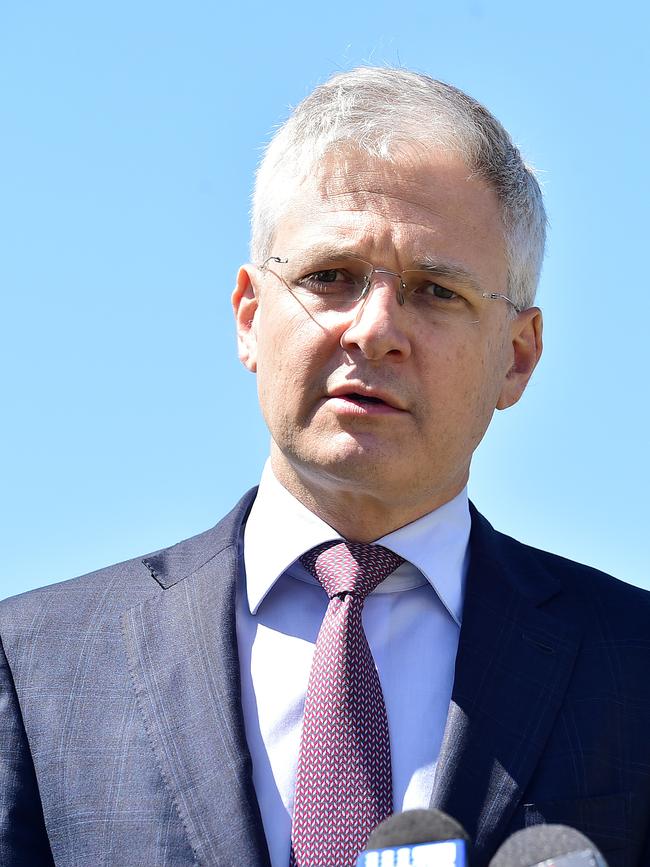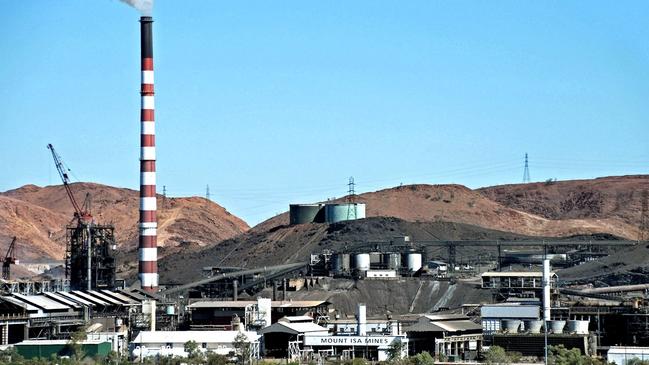Power could unleash Mt Isa, Queensland’s rich mineral province
When the lights went out in Mt Isa earlier this year, it highlighted the energy vulnerability of one of the nation’s wealthiest mineral provinces.

Business
Don't miss out on the headlines from Business. Followed categories will be added to My News.
When the lights went out in Mt Isa earlier this year, it not only interrupted nightly television viewing for locals of the Queensland industrial city, but highlighted the energy vulnerability of one of the nation’s wealthiest mineral provinces.
The four-hour blackout resulted from a failure at the only power station supplying electricity to the city, which is home to the giant Glencore copper and zinc operations, one of the world’s largest mining complexes.
The power failure sparked calls to fast-track long-awaited plans for a $1.7bn, 1100km high voltage line connecting the North West Minerals Province to Townsville.
The critical piece of infrastructure called CopperString 2.0, touted as bringing cheaper and more reliable power to the region, is being proposed by Townsville-based private company CuString, headed by energy industry veteran Joseph O’Brien.
Currently, the national electricity grid in North Queensland does not extend further west than Townsville, making energy-intensive industrial projects in the region practically impossible.
With almost 10,000 customers left in the dark and industry grinding to a halt during the five-hour blackout, Mr O’Brien says Mt Isa cannot remain an “energy island” dependent on a sole power station if its full potential is to be realised. Calls for the prioritisation of the CopperString project underscore growing concern that high energy costs will continue to hold back manufacturing as Australia attempts to rebuild the sector after Covid-19.

Electricity prices for manufacturing industrial users have skyrocketed by 180 per cent since 2000. Cheap energy could make Australia a ‘‘sustainable manufacturing superpower’’, according to economists such as Ross Garnaut, but major investment in grid infrastructure will be required. Mr O’Brien, a former director at Andrew ‘‘Twiggy’’ Forrest’s wind farm developer Windlab, argues “we can’t have a world-leading minerals powerhouse that’s without power. The blackout shows us how fragile the system is up there.
“Queensland’s minerals producers are forced to buy electricity from a monopoly with zero spare capacity.”
The CopperString project has some heavy backers including Korea Zinc, the parent company of Sun Metals in Townsville, which sees the potential for cheaper power to boost manufacturing in the region, particularly based around renewable energy such as hydrogen and solar. Already 2000MW of wind and solar projects have formally expressed interest in connecting to CopperString.
The power link also could help the state’s ambitious plans to develop a hydrogen export industry complementing other renewable energy sources.
Mr O’Brien said the province had billions of dollars’ worth of “new economy” resources such as copper, cobalt, gold and graphite crucial for the manufacture of batteries and clean energy projects, as well as rare earth elements such as molybdenum, rhenium, and holmium.
“Given the recent gains in commodity prices, the value of those deposits is rising all the time,” said Mr O’Brien. He estimated national revenue from copper, nickel and lithium alone will exceed revenue from thermal coal by 2025-26.
Mr O’Brien said an independent study of the province last May estimated the value of its in-ground minerals at about $680bn, revenue equivalent to about 10 state budgets.
“The value of this ‘treasure chest’ has since jumped by more than $60bn to $742bn according to revised estimates – that’s $1bn every week since the initial study was released,” he said.
But he said access to cheaper power remained a major barrier to extracting value from this treasure chest. Electricity costs in northwest Queensland are uncompetitive compared to our global competitors.

For example, the energy costs of producing copper in Mt Isa are twice that of key competitors including Russia, Peru and the US.
CopperString will be the largest geographic expansion of the National Electricity Market ever undertaken, with its proponents claiming it could reduce power prices by 40 per cent.
The ambition is that with access to cheaper power the region could become a hub for advanced mineral processing. Mr O’Brien estimates that access to lower priced electricity could result in $124bn of additional mineral production over the next 30 years.
“Exploration activity in the province is extremely high, from small cap explorers through to Rio Tinto and Anglo,” he said. “This is a big signal of demand.”
Mr O’Brien said construction of the line was due to start this year, with a large proportion of funding hopefully coming from the Northern Australia Infrastructure Facility (NAIF).
Both the federal and state government have expressed support for the project, which could “break ground” as early as October.
It is expected to create 750 construction jobs over three years and sustain more than 5000 jobs over the longer term from increased mineral production. During construction, the project will require 23,000 tonnes of aluminium alloy cable, 66,450 tonnes of steel for transmission towers and reinforcement and 125,000 cubic metres of concrete.
Mr O’Brien said CopperString 2.0 was a nation-building project and a chance to develop massive resources.
Originally published as Power could unleash Mt Isa, Queensland’s rich mineral province


